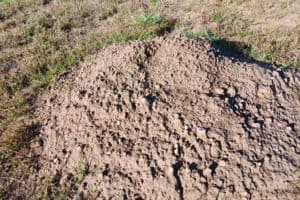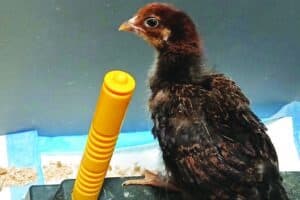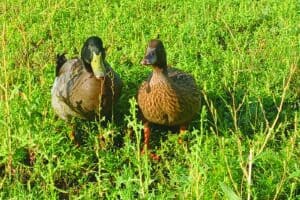Longtime local journalist Bill Radford and his wife, Margaret, live on 5 acres in the Falcon area with ducks, chickens, rabbits, dogs, cats, two noisy parrots, goats, a horse and a blind mule. Contact Bill at billradford3@gmail.com.
We’ve had unexpected but welcome guests for the summer – a pair of swallows that built a nest on the south of our house under the eaves.They appear to be cliff swallows, known for their gourd-shaped mud nests. It’s the first summer in our four here that we’ve had swallows, and it was fascinating to watch them build their nest, one beak-full of mud at a time. We have just the one nest, but a neighbor’s house has attracted dozens, if not hundreds; that house is stuccoed, which presumably provides a better surface for nest-building than our siding. We were worried the nest on our house would slide off, but it has held steady. (My wife wants me to build some type of hammock under the nest to catch any babies that fall out.)We also wonder if our pair of swallows are oddly anti-social, since cliff swallows typically live in large colonies, as in our neighbor’s case. Charles and Mary Brown’s “Birds of North America” calls the cliff swallow one of the most social land-birds of North America; a single site may contain thousands of nests. Barn swallows, on the other hand, are typically solitary as they nest. Their nests also differ in appearance: cup-shaped rather than gourd-shaped. Barn swallows are also known for their long, deeply forked tails; cliff swallows have square tails. (North America is home to nine species of swallows; six of them, including the cliff and barn swallows, breed regularly in Colorado, according to the Greenwood Wildlife Rehabilitation Center.)Our neighborhood swallows presumably get their mud from a pond about a mile away; a nest contains 900 to 1,200 mud pellets, according to AllAboutBirds.org. That’s a lot of trips to build a nest, but cliff swallows are hardy; think of the distance they travel to get here from their winter homes in South America.Cliff swallows apparently believe in gender equality; both sexes help build the nest and both sexes help incubate the female’s eggs.Cliff swallows historically inhabited open canyons, foothills, escarpments and river valleys that offered a vertical cliff face for nest attachment, according to the Cliff Swallow Project. Thanks to the rise of manmade structures such as bridges and buildings that provide nesting sites, the swallows are now found in a wide variety of habitats. The Clift Swallow Project states that most colony sites are near open fields or pastures where the birds forage.The Cliff Swallow Project (cliffswallow.org) is touted as one of the longest-running field studies of birds in North America. Barn swallows also have a spot on the scientific stage with the Barn Swallow Project (barnswallowproject.com) out of the University of Colorado at Boulder; researchers there are studying “population divergence” in six subspecies of barn swallows, as they tackle a fundamental biological question: What processes lead to the formation of new species?The U.S. Fish and Wildlife Service notes the good and the bad of swallows. Cliff and barn swallows provide “an ecological service” as insect controllers, consuming swarming insects; including wasps, flies, grasshoppers and more. (The sky over our neighbor’s place is filled each evening with a swirling mass of swallows, presumably chasing down their dinner.) On the other hand, those large cliff swallow colonies can be quite messy, producing a great amount of bird droppings.Be warned that cliff and barn swallows are state and federally protected under the Migratory Bird Treaty Act of 1918. Active nests with eggs or chicks inside may not be touched or destroyed without a permit from the Fish and Wildlife Service.Swallows return to their nesting sites year after year, though some old nests may require some repair work. The famed swallows of Capistrano, known for their arrival each March at Mission San Juan Capistrano in California, are cliff swallows. We’re hoping the swallows of Radford Ranch make their return each year as well.






